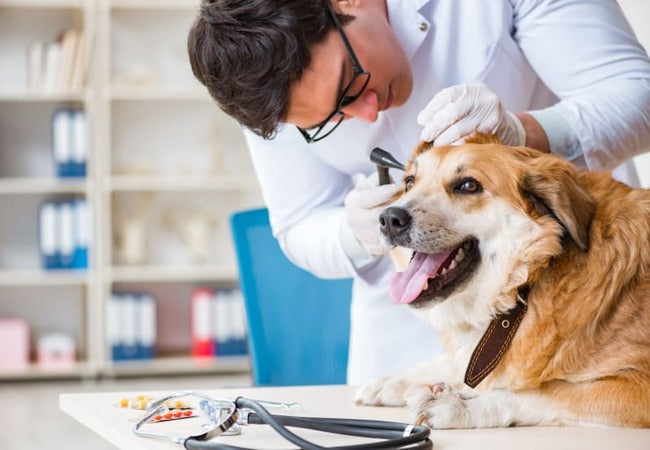Valley Fever in Dogs: Veterinary Insights & Care Guide 2025 🩺🐾

In this article
🐾 Valley Fever in Dogs: Veterinary Insights & Care Guide 2025 🩺
By Dr. Duncan Houston BVSc
Hello, I’m Dr Duncan Houston BVSc, veterinarian and founder of Ask A Vet. Today’s article dives deep into Valley Fever—also known as coccidioidomycosis—an environmental fungal infection dogs contract in dusty, arid regions. This guide offers a 2025 update with comprehensive information on causes, clinical signs, diagnostics, treatment plans, and prevention tips, enhanced by expert support from Ask A Vet. Let's explore together 🐶💡
1. What Is Valley Fever (Coccidioidomycosis)? 🤔
Valley Fever is caused by inhaling airborne spores from the soil fungi Coccidioides immitis and Coccidioides posadasii. Once inhaled, these spores transform into spherules in the lungs and may spread through the body in vulnerable dogs. It cannot spread via contact and is non-contagious.
2. Where & Why Dogs Get It ⚠️
- Geography: endemic in arid climates—Arizona, California, Nevada, New Mexico, Utah, Texas, and parts of Mexico.
- Environmental triggers: dusty winds, digging, construction, soil disturbance release spores.
- Dog behavior: close contact with soil makes dogs prime hosts.
3. Clinical Signs of Valley Fever 🕵️♂️
3.1 Primary (Pulmonary) Disease
- Dry, honking cough (often persistent)
- Fever, lethargy, poor appetite, weight loss
- Pneumonia or lymph node enlargement on chest X-rays
3.2 Disseminated Disease
- Lameness, swollen/painful bones or joints—due to osteomyelitis
- Skin abscesses or non-healing wounds
- Neurological signs: seizures, back/neck pain
- Eye inflammation, vision issues or blindness
- Possible heart involvement and systemic signs
4. Who Is Most at Risk?
Young puppies, senior dogs, or dogs with weakened immune systems face a higher risk of severe disease. However, any dog in endemic areas is susceptible based on exposure magnitude and immune response.
5. Diagnosing Valley Fever 🔬
- History & exam: travel or residence in endemic regions, respiratory/joint signs
- Serologic testing: measurement of IgM/IgG or complement fixation—suggests exposure and active infection
- Imaging: chest X-rays for lung lesions; orthopedic X-rays if lameness present
- Fluid sampling or biopsy: confirm via microscopic spherules or culture if accessible
- Other labs: CBC, chemistry—evaluate systemic involvement or organ function
6. Treatment Plans 🛠️
6.1 Antifungal Medications
Treatment can span months to years:
- Common choices: fluconazole, itraconazole, ketoconazole
- Severe cases: amphotericin B or newer azoles after specialist consultation
- Duration: typically 6–12 months, sometimes lifelong in chronic/recurrent cases
6.2 Supportive Therapy
- Anti-inflammatories or pain relief for joint/inflammatory involvement
- Nutritional support, appetite stimulants for weakened dogs
- Fluid therapy as needed
6.3 Monitoring & Follow-Up
- Repeat serology & imaging at intervals to assess treatment response
- Monitor liver/kidney function due to potential antifungal side effects
- Watch for relapse; about 25% of treated dogs may relapse
7. Prognosis 📊
- With timely treatment, over 90% of dogs recover
- Disseminated disease or CNS involvement worsens prognosis
- Relapse risk is moderate, requiring close long-term care
8. Prevention Strategies 🛡️
- Minimize exposure in endemic areas—avoid dusty outings, walk on paved surfaces
- Keep dogs indoors on windy days or when dust is high
- Use air filtration for indoor environments if dust levels are elevated
9. Emerging Vaccine Research 💉
Veterinary science is making progress: researchers at the University of Arizona have developed an experimental vaccine that’s shown promise in preventing infection in dogs—pending USDA approval. This could soon shift prevention strategies significantly.
10. Role of Ask A Vet💡
-
Ask A Vet: Offers telehealth triage, treatment modeling, lab interpretation, and follow-up support
11. When to Contact the Vet Immediately 🚨
- Persistent coughing, hard breathing, fever, or weight loss
- Lameness, joint swelling, back pain—especially if waxing and waning
- Neurological signs: seizures, head tilt, personality changes
- Non-healing skin lesions or new wounds
- Known Valley Fever diagnosis needing follow-up
12. Final Thoughts 📝
Valley Fever is a serious fungal disease but is treatable with accurate diagnosis and long-term care. With antifungal therapy, supportive treatment, and regular monitoring—backed by tools from Ask A Vet most dogs can recover and thrive. Awareness and prevention remain key as climates change. 🐾💙
If you suspect Valley Fever or live in an endemic region, schedule a telehealth consult via AskAVet.com and download our app for follow-up support, reminders, and expert guidance. 🌟






